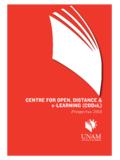Transcription of MAX EBERLE’S 8-Day Essential Pool Skills Boot Camp
1 MAX EBERLE S 8-Day Essential Pool Skills boot Camp Although this is a Free boot Camp with your request for this information and your signup to Max Eberle s informative and Free email newsletter, you have permission to share this pdf with friends and family who may want to improve their pool game by emailing it to them or sharing on facebook etc. Or you may direct them to so they too can benefit from signing up. Max Eberle is a Professional Pool Player from the USA, the winner of hundreds of pool tournaments, the Author of Zen Pool, the Creator of the Powerful Pool DVD Series, and a sought after private instructor. He has competed and given exhibitions throughout the Americas, Europe, and Asia. Welcome to this informative boot Camp to help take your pool game to even higher levels!
2 2010-2011 Max Eberle All Rights Reserved. DAY 1 of boot Camp! Link to the Day 1 boot Camp Video Video bullet The foremost important thing in mastering pool is to control your hands and the pool cue. GRIP HAND (at back end of cue) The grip at the back end of the cue should not be too tight or too loose (imagine you are holding a small live bird and do not want to hurt it or let it fly away) Too tight or stiff of a grip leads to poor back swing and follow through. Too loose a grip (fingers barely gripping, only the finger tips touching the cue) will lead to less power, feel, and control. A good grip controls the cue without being too tight. A good grip cradles the cue in the fingers. You need not twist the wrist of your grip hand in or out during the follow through.
3 Let the grip hand hang straight down from your elbow. Have control over the cue with your grip hand. GRIP POSITION ON CUE The grip will be approximately over your back foot (your right foot if you are right handed) The grip will be in a position so that your forearm is close to vertical when the tip is precisely next to the cue ball. Get your grip hand into shooting position before you assume your stance. BRIDGE HAND An "Open bridge hand" is great as long as it is solid without moving during your stroke. To form the open hand bridge, make a "tent" with your hand and fingers, and make a "V-Groove" between your thumb and index finger. Make the bridge solid by forming it before you place it on the table. The bridge should be ready before, or just as you place it down on the table, if you wait to stabilize it, your accuracy and consistency will suffer.
4 Allow for a close to level cue with specialty rail bridges when shooting off the rail. Control your cue asap before each shot. BRIDGE DISTANCE FROM CUE BALL Keep the V-Groove of your bridge hand 6-12 inches from the cue ball as a guideline. Too close will prevent power and too far may hinder accuracy. Find the right spot for you by watching great players and experimenting. Now Go Run Racks! Max Eberle DAY 2 of boot Camp! Link to the Day 2 boot Camp Video Video bullet Find the stroking line once you have control over the cue. AIM KEY: Find the "ghost" cue ball by finding where the cue ball must be at the moment of contact with the object ball. Put your cue on the line passing through the center of the cue ball and the center of the ghost ball.
5 KEY: Find the stroking line BEFORE you take your stance, do NOT get down on the shot and then find the stroking line, this leads to massive inconsistency. First develop the ability to stand behind the cue ball and find the stroking line. AIM KEY: Find the contact point on the object ball and stand behind the cue ball, aim while standing and without shooting, use judgement to figure out how to hit the contact point on the object ball with the round cue ball. Thank you, now go run some racks! Max Eberle DAY 3 of boot Camp! Link to the Day 3 boot Camp Video Video bullet Setting up on the Stroking Line Consistently put your back foot on the stroking line at the perfect distance. Find your balanced stance then find where your back foot is and measure foot's distance to the cue ball with your cue or eyeball it.
6 Setting up: Put cue on stroking and stand behind the cue with tip at the cue ball, now place your back foot under the end of the cue and step into your stance with eyes on the stroking line. get closer to cue ball and put cue stick by the cue ball and get into stance. Find a repeatable way to set up on the stroking line for consistency. Main thing is to find the stroking line and set up back foot on that line in the same place. Your precision will pay off enormous dividends on the table! Thanks and go run some racks! Max Eberle DAY 4 of boot Camp! Link to the Day 4 boot Camp Video Video bullet THE STROKE The stroke is a throwing motion like in other sports. You are throwing the cue without letting go. There is a back swing and a follow through.
7 Do not stop the cue stick at the cue ball. Get into the habit of following through the cue ball. Throw the cue right down the stroking line. Don't stroke on a line other than the stroking line, ie. Don't steer the cue. The whole point of first finding the stroking line is to actually stroke on that line. Keep your head and body still. Pull your backswing back further for more power. Pull back less for soft shots. Having a perfectly level stroke is mostly myth. Usually you will stroke and follow through downwards slightly into the cue ball. The stroke is "close to level," unless elevated when required as in jump or masse or draw shots off the rail. The follow shot stroke is the most level stroke. Stay tuned for Day until then, practice hard!
8 Thank you and go run some racks! Max Eberle DAY 5 of boot Camp! Link to the Day 5 boot Camp Video Video HOW TO ADJUST YOUR AIM WHEN USING SIDE SPIN Striking the cue ball anywhere on the center vertical axis does not greatly affect aim, ie. hitting top or bottom spin will not change your aim very much if at all. Hitting the cue ball with side spin will cause deflection. For example: striking the cue ball with "2 tips" of left English will cause the cue ball to deflect to the right. Therefore you must aim more to the left to pocket the object ball. More side spin and more speed = more deflection. Learn to adjust your aim with scientific practice and feel. THROW is between the cue ball and object ball and refers to the spin on the cue ball "throwing" the object ball off of the line of centers.
9 So right English would throw the object ball to the left, slightly. Throw will not affect your aim nearly as much as deflection. Know your plan with side spin before you set up your stance so that you can factor this adjustment in aim and still have a balanced, powerful, winning set and make your shots! Thank you my friend, practice hard and go run some balls! Max Eberle DAY 6 of boot Camp! Link to the Day 6 boot Camp Video Video bullet CUE BALL CONTROL Start with the basics of stop, draw, and follow. Being able to stop the cue ball on straight in shots at all distances is necessary and will help with all other shots. The stop shot stroke is like a draw shot, just slightly softer. Develop speed control with backspin. Jumping the cue ball off the table is normal when learning to draw, to avoid this make sure you have chalk, a solid bridge, a smooth stroke, and a smooth backswing.
10 Make sure you actually strike the cue ball where you intend, instead of dipping down on your final stroke and scooping the cue ball into the air. On a draw shot, do not pull the cue back right after striking the cue ball, instead, follow through as this is what produces the backspin on the cue ball. Only pull back if the cue ball is coming back fast into the cue tip. Develop the discipline to pick a spot for the cue ball to land. This will allow rapid improvement. Set up a shot exactly the same and shoot it until you land the cue ball on the spot you picked. Even if it takes one hour to do this. Only being able to land the cue ball in a large position zone will not suffice to beat a champion. Develop fine-tuned speed and direction control with your cue ball with relentless practice and perseverance.






